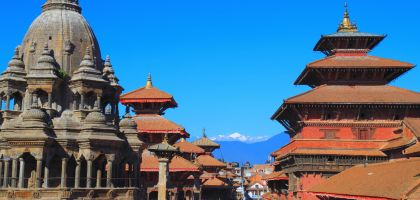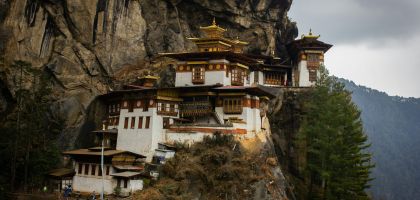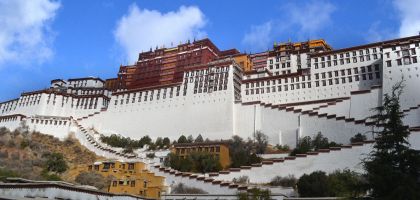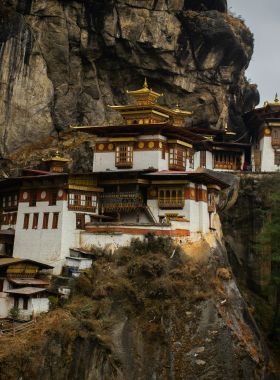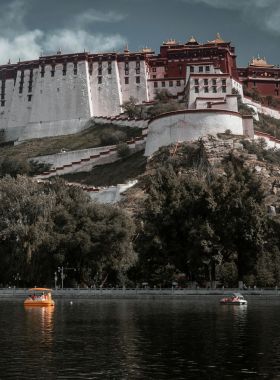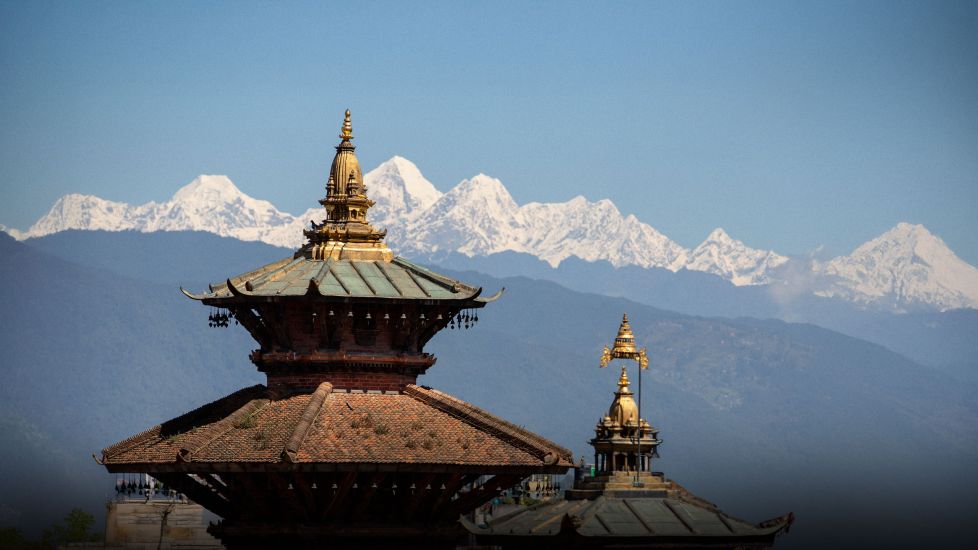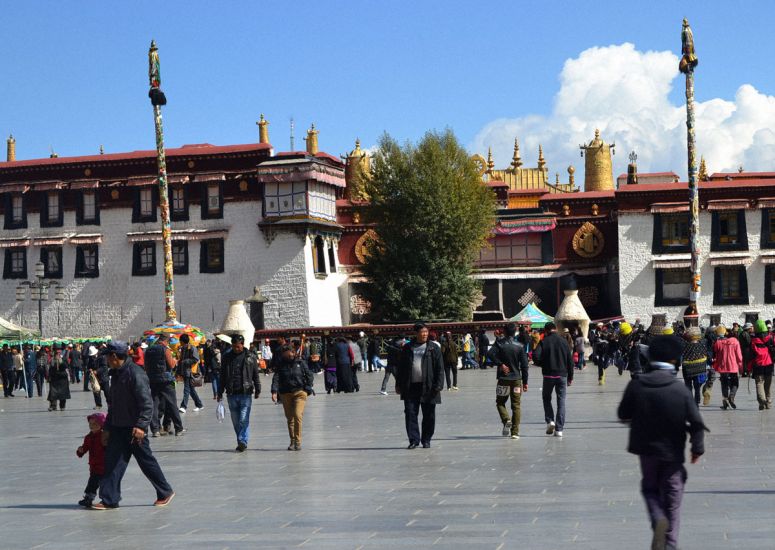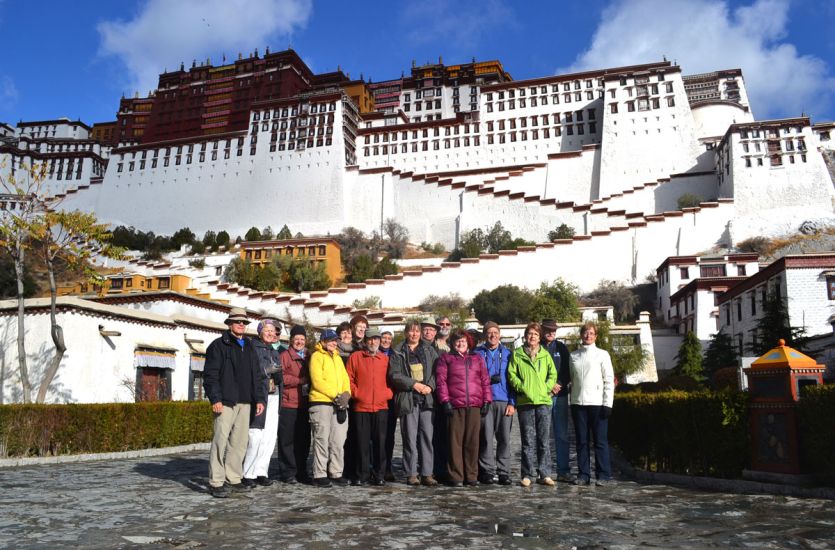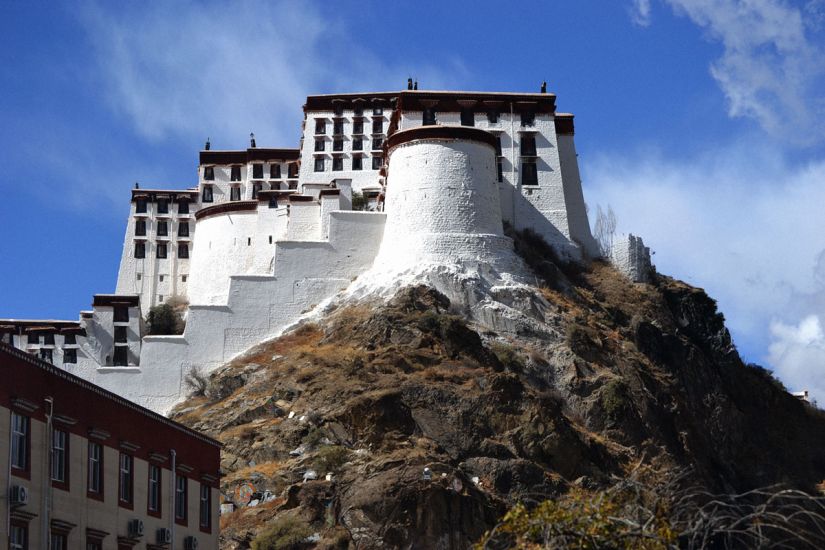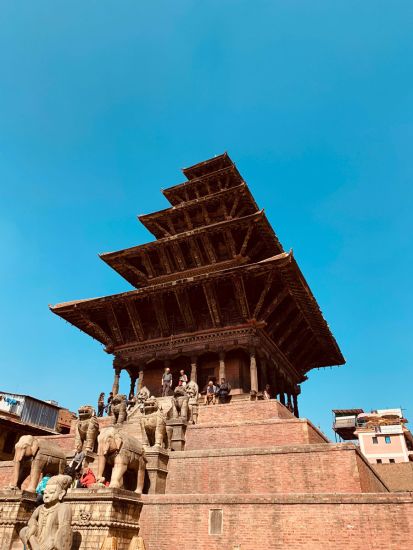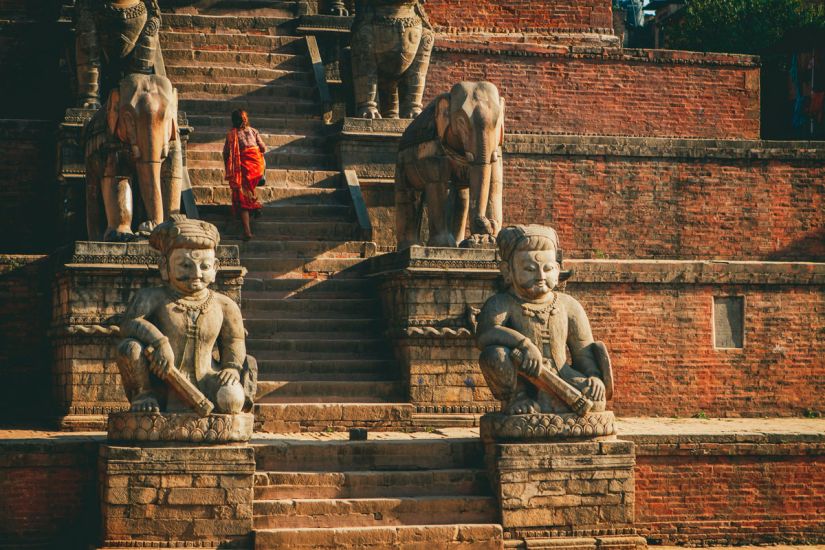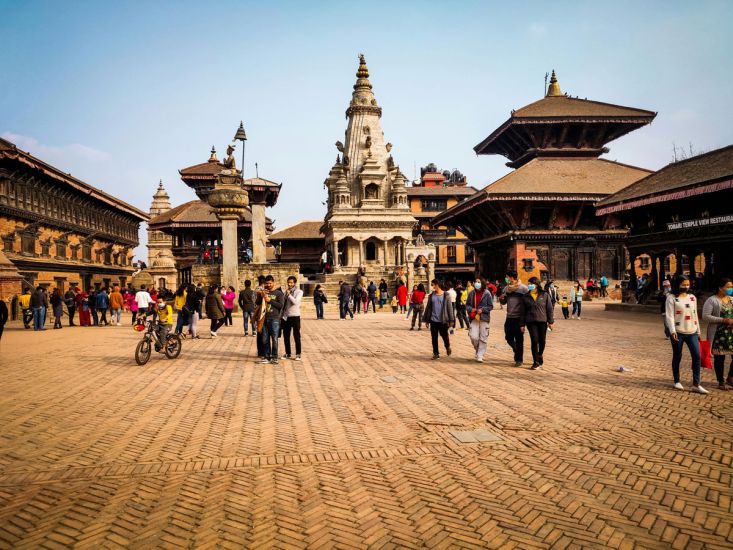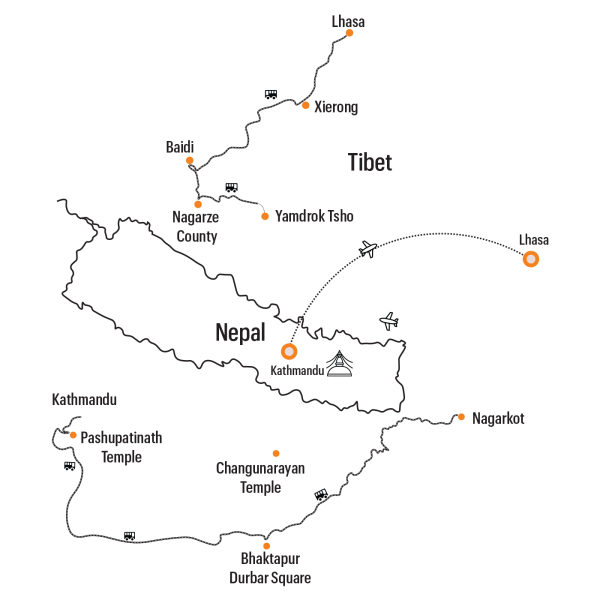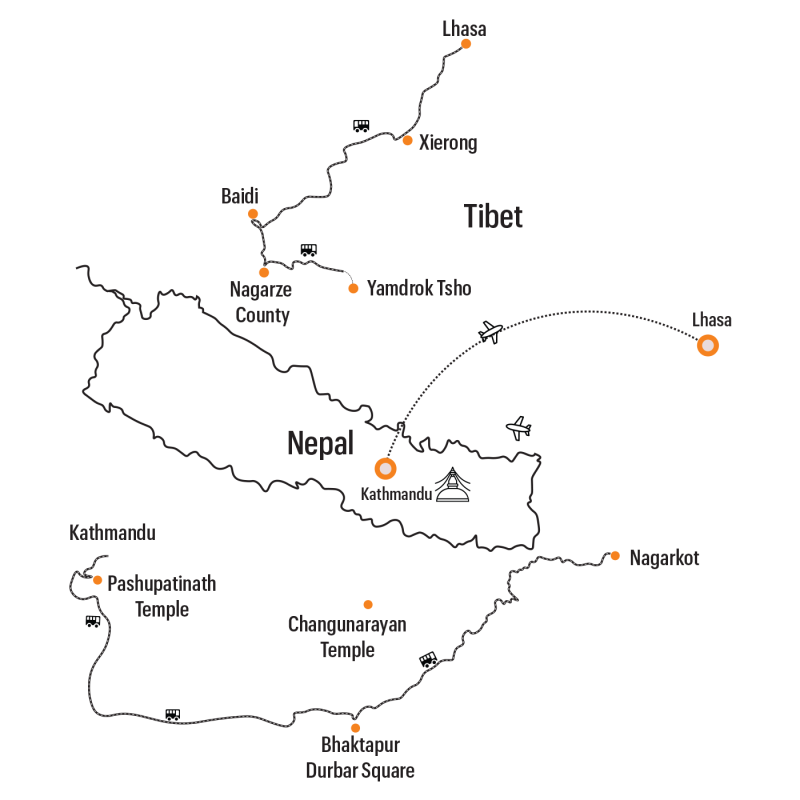Nepal-Tibet Classic Tour
14 Days / Cross Border Tours
Activity
Difficulty Level
Destinations
Trip Start / End
Accommodation
Travel Style
Best time to travel
Personalized Travel Advice

Dev Raj Nepal
+977 9851096523
Detailed Itinerary
01
DAY
01
Up on arrival in Kathmandu airport, meet the guide and get transferred to hotel. Today we will have full rest. Overnight in Kathmandu.
Arrival in Kathmandu
Up on arrival in Kathmandu airport, meet the guide and get transferred to hotel. Today we will have full rest. Overnight in Kathmandu.
02
DAY
02
Begin your day with a visit to Pashupatinath Temple, the holiest Hindu temple situated on the banks of the sacred Bagmati River, a major tributary of the Ganges. While access to the temple courtyard is restricted to Hindus, you will have an excellent view from across the river. The temple is bustling with the devotion of pilgrims, and you will also witness Hindu cremation ceremonies along the riverbank. Just 20 minutes away is the towering Boudhanath Stupa, renowned as the largest stupa in the world and a significant pilgrimage site for Tibetan Buddhists. The area is home to Tibetan refugees, and you’ll see pilgrims walking around the stupa, spinning prayer wheels, counting beads, and chanting the sacred mantra “Om Mani Padme Hum.” Surrounding the stupa are monasteries representing various schools of Tibetan Buddhism. In the afternoon, take a 14 km drive northeast to Bhaktapur, a beautifully preserved medieval Malla principality, where you can admire the intricate wood and stone carvings in its temples, monasteries, and homes. Overnight in Kathmandu.
Kathmandu sightseeing (B)
Begin your day with a visit to Pashupatinath Temple, the holiest Hindu temple situated on the banks of the sacred Bagmati River, a major tributary of the Ganges. While access to the temple courtyard is restricted to Hindus, you will have an excellent view from across the river. The temple is bustling with the devotion of pilgrims, and you will also witness Hindu cremation ceremonies along the riverbank. Just 20 minutes away is the towering Boudhanath Stupa, renowned as the largest stupa in the world and a significant pilgrimage site for Tibetan Buddhists. The area is home to Tibetan refugees, and you’ll see pilgrims walking around the stupa, spinning prayer wheels, counting beads, and chanting the sacred mantra “Om Mani Padme Hum.” Surrounding the stupa are monasteries representing various schools of Tibetan Buddhism. In the afternoon, take a 14 km drive northeast to Bhaktapur, a beautifully preserved medieval Malla principality, where you can admire the intricate wood and stone carvings in its temples, monasteries, and homes. Overnight in Kathmandu.
03
DAY
03
After breakfast, we will make a 5-hour drive to Chitwan National Park which is one of Asia’s best preserved game park. Upon reaching Chitwan and after some refreshment, visit National park visitors center, acquire the information on flora & fauna of the park and visit the village of Tharu Tribal people of Chitwan whose lifestyle remain unchanged over the centuries. Overnight in Chitwan.
Kathmandu – Chitwan National Park
After breakfast, we will make a 5-hour drive to Chitwan National Park which is one of Asia’s best preserved game park. Upon reaching Chitwan and after some refreshment, visit National park visitors center, acquire the information on flora & fauna of the park and visit the village of Tharu Tribal people of Chitwan whose lifestyle remain unchanged over the centuries. Overnight in Chitwan.
04
DAY
04
After breakfast, we will go for a scenic Jungle safari in the Chitwan National Park. The Park was established in 1973 and has been granted the status of a UNESCO World Heritage Site. Spread around about 368 sq miles, the park in home to 543 species of birds and 68 mammals including the elusive one-horned Rhinoceros and the endangered Royal Bengal Tiger.
We will also visit the Elephant breeding centre. In the evening, we will enjoy the amazing local Tharu dances. Tharu are the indigenous inhabitants of the region and still live today with their century old lifestyle and traditions. Overnight in Chitwan
Jungle Safari
After breakfast, we will go for a scenic Jungle safari in the Chitwan National Park. The Park was established in 1973 and has been granted the status of a UNESCO World Heritage Site. Spread around about 368 sq miles, the park in home to 543 species of birds and 68 mammals including the elusive one-horned Rhinoceros and the endangered Royal Bengal Tiger.
We will also visit the Elephant breeding centre. In the evening, we will enjoy the amazing local Tharu dances. Tharu are the indigenous inhabitants of the region and still live today with their century old lifestyle and traditions. Overnight in Chitwan
05
DAY
05
After breakfast, we will drive Pokhara, which is 160 kilometers, typically taking about 4-5 hours, depending on road conditions. As you leave the hilltop town of Bandipur, the winding roads take you through picturesque valleys and terraced farmlands. Along the way, the landscape opens up to reveal stunning views of the Annapurna and Dhaulagiri mountain ranges.
Pokhara, situated at an elevation of approximately 827 meters, greets travelers with its serene lakes, most notably Phewa Lake, and its laid-back atmosphere. Known for its adventure activities, beautiful lakes, and as the gateway to the Annapurna trekking region, Pokhara offers a perfect contrast to Bandipur’s old-world charm with its more vibrant, outdoor-oriented experience. Overnight in Pokhara.
Drive to Pokhara
After breakfast, we will drive Pokhara, which is 160 kilometers, typically taking about 4-5 hours, depending on road conditions. As you leave the hilltop town of Bandipur, the winding roads take you through picturesque valleys and terraced farmlands. Along the way, the landscape opens up to reveal stunning views of the Annapurna and Dhaulagiri mountain ranges.
Pokhara, situated at an elevation of approximately 827 meters, greets travelers with its serene lakes, most notably Phewa Lake, and its laid-back atmosphere. Known for its adventure activities, beautiful lakes, and as the gateway to the Annapurna trekking region, Pokhara offers a perfect contrast to Bandipur’s old-world charm with its more vibrant, outdoor-oriented experience. Overnight in Pokhara.
06
DAY
06
Early in the morning, we will drive to Sarangkot (1,992m) to witness a breathtaking sunrise and panoramic views of the Himalayas. On a clear day, Sarangkot offers stunning vistas of the western Himalayan range and the surrounding valleys. We’ll also explore the lively Old Bazaar. For those who enjoy hiking, there is an option to hike up to the Peace Stupa, which stands majestically on the ridge overlooking Phewa Lake. You can also take a relaxing boat ride on Phewa Lake and visit the island temple of Goddess Barahi, one of the most popular temples in Pokhara. Depending on your interests, we can also visit the Mountaineering Museum or the Natural History Museum. Overnight in Pokhara.
Pokhara
Early in the morning, we will drive to Sarangkot (1,992m) to witness a breathtaking sunrise and panoramic views of the Himalayas. On a clear day, Sarangkot offers stunning vistas of the western Himalayan range and the surrounding valleys. We’ll also explore the lively Old Bazaar. For those who enjoy hiking, there is an option to hike up to the Peace Stupa, which stands majestically on the ridge overlooking Phewa Lake. You can also take a relaxing boat ride on Phewa Lake and visit the island temple of Goddess Barahi, one of the most popular temples in Pokhara. Depending on your interests, we can also visit the Mountaineering Museum or the Natural History Museum. Overnight in Pokhara.
07
DAY
07
After a short flight to Kathmandu, we will head directly to Bhaktapur Durbar Square, one of the most iconic heritage sites in Nepal. Known for its rich history and stunning Newari architecture, Bhaktapur Durbar Square is home to ancient palaces, temples, and courtyards. As we explore the square, you’ll see the intricately carved 55-Window Palace, the towering Vatsala Temple, and the grand Nyatapola Temple, which stands as the tallest pagoda in Nepal. The square, a UNESCO World Heritage site, offers a glimpse into Nepal’s medieval past and the craftsmanship of the Newar people, making it a must-visit for history and culture enthusiasts. Overnight in Kathmandu.
Flight Back to Kathmandu
After a short flight to Kathmandu, we will head directly to Bhaktapur Durbar Square, one of the most iconic heritage sites in Nepal. Known for its rich history and stunning Newari architecture, Bhaktapur Durbar Square is home to ancient palaces, temples, and courtyards. As we explore the square, you’ll see the intricately carved 55-Window Palace, the towering Vatsala Temple, and the grand Nyatapola Temple, which stands as the tallest pagoda in Nepal. The square, a UNESCO World Heritage site, offers a glimpse into Nepal’s medieval past and the craftsmanship of the Newar people, making it a must-visit for history and culture enthusiasts. Overnight in Kathmandu.
08
DAY
08
Today we will fly from Kathmandu to Lhasa, soaring over the majestic Himalayan range, with breathtaking views of some of the world’s highest peaks, including Mount Everest. The flight from Kathmandu to Lhasa typically takes around 1 hour and 20 minutes and offers a rare and stunning perspective on the rugged mountain terrain that stretches between Nepal and Tibet. Upon landing in Lhasa, situated at an elevation of around 3,650 meters (11,975 feet), we will be greeted by the unique high-altitude landscape and the distinct Tibetan culture. Check in to the hotel and take rest in order acclimatize to the altitude. Overnight in Lhasa.
Flight to Lhasa
Today we will fly from Kathmandu to Lhasa, soaring over the majestic Himalayan range, with breathtaking views of some of the world’s highest peaks, including Mount Everest. The flight from Kathmandu to Lhasa typically takes around 1 hour and 20 minutes and offers a rare and stunning perspective on the rugged mountain terrain that stretches between Nepal and Tibet. Upon landing in Lhasa, situated at an elevation of around 3,650 meters (11,975 feet), we will be greeted by the unique high-altitude landscape and the distinct Tibetan culture. Check in to the hotel and take rest in order acclimatize to the altitude. Overnight in Lhasa.
09
DAY
09
Today, you’ll visit Drepung Monastery, Jokhang Temple, and Barkhor Street, all central to Tibetan culture and religion. Drepung Monastery, located west of Lhasa, was once the largest and wealthiest of the three major Yellow Sect monasteries. Next, we’ll drive to Old Lhasa to see Jokhang Temple, built in 647 AD by Queen Bhrikuti, wife of King Songtsan Gampo, with craftsmen from Tibet, China, and Nepal. Barkhor, meaning “pilgrim’s inner circuit,” encircles Jokhang Temple and has grown into a bustling area over time. Overnight at Lhasa.
At Lhasa
Today, you’ll visit Drepung Monastery, Jokhang Temple, and Barkhor Street, all central to Tibetan culture and religion. Drepung Monastery, located west of Lhasa, was once the largest and wealthiest of the three major Yellow Sect monasteries. Next, we’ll drive to Old Lhasa to see Jokhang Temple, built in 647 AD by Queen Bhrikuti, wife of King Songtsan Gampo, with craftsmen from Tibet, China, and Nepal. Barkhor, meaning “pilgrim’s inner circuit,” encircles Jokhang Temple and has grown into a bustling area over time. Overnight at Lhasa.
10
DAY
10
In the morning, we’ll visit Potala Palace, followed by Sera Monastery and Norbulingkha Palace in the afternoon. Potala Palace, located on “Red Hill” to the west of old Lhasa, is an iconic architectural wonder and was once the administrative and political center of Tibet. It continues to captivate visitors and pilgrims alike. Afterward, we’ll visit Norbulingkha, the summer residence of the Dalai Lamas, located 2.5 miles west of Potala. In the afternoon, we’ll explore Sera Monastery, the last of Lhasa’s three major Yellow Sect monasteries, where legend says hail fell during its foundation. We’ll also visit its meditation room, reception room, and throne room, and observe the monks’ debating session. Overnight at Lhasa.
Lhasa
In the morning, we’ll visit Potala Palace, followed by Sera Monastery and Norbulingkha Palace in the afternoon. Potala Palace, located on “Red Hill” to the west of old Lhasa, is an iconic architectural wonder and was once the administrative and political center of Tibet. It continues to captivate visitors and pilgrims alike. Afterward, we’ll visit Norbulingkha, the summer residence of the Dalai Lamas, located 2.5 miles west of Potala. In the afternoon, we’ll explore Sera Monastery, the last of Lhasa’s three major Yellow Sect monasteries, where legend says hail fell during its foundation. We’ll also visit its meditation room, reception room, and throne room, and observe the monks’ debating session. Overnight at Lhasa.
11
DAY
11
Leave Lhasa early in the morning for Yamdrok Tsho. This lake is 183 km away from Lhasa, and the drive will take about 4 hours. Yamdrok Lake—”the jade lake on the pasture”—is one of Tibet’s four sacred lakes. According to local legend, Yamdrok was once a fairy goddess from heaven and is revered as the female Guardian of Buddhism in Tibet. The lake’s pristine waters are believed to bless and protect all who visit it. At a breathtaking altitude of 4,441 meters above sea level, Yamdrok Lake stretches 130 kilometers from east to west, with a depth ranging from 20 to 60 meters. Overnight at Gyantse.
Lhasa-Gyantse via Yamdro Tso Lake
Leave Lhasa early in the morning for Yamdrok Tsho. This lake is 183 km away from Lhasa, and the drive will take about 4 hours. Yamdrok Lake—”the jade lake on the pasture”—is one of Tibet’s four sacred lakes. According to local legend, Yamdrok was once a fairy goddess from heaven and is revered as the female Guardian of Buddhism in Tibet. The lake’s pristine waters are believed to bless and protect all who visit it. At a breathtaking altitude of 4,441 meters above sea level, Yamdrok Lake stretches 130 kilometers from east to west, with a depth ranging from 20 to 60 meters. Overnight at Gyantse.
12
DAY
12
Visit the highlights of Gyantse such as Pelkor Chode Monastery and Kumbum Stupa. From the stupa, take rickshaw ride back to the parking and drive back to the hotel. Collect your luggage and set out for Shigatse. Check in to hotel and after refreshment; visit the famous Tashilunbo Monastery – the principal seat of Panchen Lama, the second most venerated religious leader of Tibet. Overnight in Shigatse.
Gyantse-Shigatse
Visit the highlights of Gyantse such as Pelkor Chode Monastery and Kumbum Stupa. From the stupa, take rickshaw ride back to the parking and drive back to the hotel. Collect your luggage and set out for Shigatse. Check in to hotel and after refreshment; visit the famous Tashilunbo Monastery – the principal seat of Panchen Lama, the second most venerated religious leader of Tibet. Overnight in Shigatse.
13
DAY
13
Today we will drive back to Lhasa via Yarlung Tsangpu River. Overnight in Lhasa.
Shigatse-Lhasa
Today we will drive back to Lhasa via Yarlung Tsangpu River. Overnight in Lhasa.
14
DAY
14
After breakfast in the hotel, get transferred to the airport for flight to home or next destination.
Departure
After breakfast in the hotel, get transferred to the airport for flight to home or next destination.
Includes / Excludes
Inclusions
-
Accommodation on twin sharing basis in 3 star standards Hotel in Tibet and Nepal.
-
Daily breakfast in the hotel in Nepal and Tibet and full meals in Chitwan.
-
All ground transfers and sightseeing by private car.
-
English speaking local guides.
-
Sightseeing admission fees.
-
Tibet Permit/Tibet Visa.
Exclusions
-
Meals other than indicated.
-
Nepal Visa
-
Expenses of personal nature such as drinks, tipping, laundry, phone etc.
-
All Lunches and dinners.
-
Extra expenses due to nature and unforeseen events such as flight delay, cancellation, trip interruption due to inclement weather, civil unrest etc.
-
Emergency medical transportation.
-
Travel insurance.
-
International airfares.
-
International flights in Kathmandu and out from Lhasa.
Trip Info
Cultural Immersion and Interactions
Expect to engage with local cultures at every turn. From participating in traditional tea ceremonies in Tibet to learning about the customs of Nepalese communities, each interaction will enrich your travel experience. Local guides will often share stories, insights, and the significance of various customs, allowing you to gain a deeper understanding of the regions’ cultural heritage.
Breathtaking Landscapes
Prepare to be awestruck by the diverse landscapes throughout your journey. From the snow-capped peaks of the Himalayas to the lush valleys of Nepal, the natural beauty is unparalleled. Expect to take plenty of photographs as you traverse through stunning mountain passes, serene lakes like Yamdrok Lake, and expansive Tibetan plains.
Cuisine and Culinary Experiences
As you travel, you’ll have the chance to enjoy both Tibetan and Nepalese cuisines. Expect to savor traditional dishes such as dal bhat, momos, and thukpa in Tibet, as well as explore a variety of international options available in Nepal. Dining experiences may range from casual local eateries to more upscale dining in hotels, catering to various palates, including those of children.
Health and Safety Considerations
As you embark on this tour, be prepared for altitude acclimatization, especially in Tibet. Expect to take it easy for the first few days, allowing your body to adjust to the high altitude. It’s important to stay hydrated, avoid alcohol, and be mindful of any symptoms of altitude sickness. Travel insurance is also highly recommended for peace of mind during your adventure.
Spring (March to May)
Spring is a beautiful time to visit, with mild temperatures and blooming flowers. In Tibet, temperatures start to rise, ranging from 5°C to 15°C (41°F to 59°F). This season marks the end of winter, making it a great time for trekking and enjoying the scenic landscapes. It’s also less crowded compared to the summer months. The Tibetan New Year (Losar) usually falls in March, providing a unique cultural experience.
Summer (June to August)
Summer is the peak tourist season, with warmer temperatures (15°C to 25°C or 59°F to 77°F) in both Tibet and Nepal. However, monsoon rains can affect Nepal. This is the best time for trekking in Nepal, especially in the Annapurna and Everest regions. In Tibet, the roads are more accessible, and the landscapes are lush and vibrant. The Saga Dawa Festival in June is an important Buddhist celebration in Tibet, attracting many visitors.
Autumn (September to November)
Autumn is another excellent time to visit, with clear skies and cooler temperatures (10°C to 20°C or 50°F to 68°F). It is also less rainy in Nepal. This season offers stunning views of the Himalayas and is ideal for trekking. The weather is stable, making it great for photography and exploration. Various cultural festivals take place during this time, including the Tibetan Shoton Festival, which showcases traditional opera and local culture.
Private Vehicles
Description: Throughout the trip, private vehicles will be used for transfers and sightseeing. These include comfortable cars or SUVs, which are good for navigating both urban and rural areas.
Comfort: These vehicles are chosen for their comfort and reliability, ensuring a smooth and enjoyable journey between destinations. They are equipped to handle various road conditions and provide a high level of convenience for travelers.
Minivans or Buses
Description: For group travel of more than 8 people Buses will be used and more a group with more than 3 people, Minivans will be used. These vehicles are suitable for accommodating larger groups and offer ample space for passengers and luggage.
Comfort: Equipped with air conditioning and comfortable seating, these vehicles are designed to enhance travel comfort over longer distances. They also offer better stability and space for scenic drives and excursions.
Special Vehicles
Description: For specific excursions, such as visiting remote areas or high-altitude locations, specialized vehicles may be used to navigate challenging terrains.
Comfort: These vehicles are equipped to handle rugged or uneven roads and provide a safe and comfortable ride in more demanding conditions.
Accommodations for this trip are based on twin-sharing arrangements, ensuring comfort and convenience throughout your journey. If you prefer a single room, a single supplement can be arranged upon request for an additional cost of USD _______.
Tibet
During your stay in Lhasa, you’ll be hosted at _____________ or a similar property. This hotel offers a welcoming environment with a blend of local Tibetan design and modern amenities, providing a comfortable base for your adventures. These accommodations ensure a pleasant and immersive experience, allowing you to relax in style while staying connected to the unique culture of each destination.
Nepal
In Nepal, your stay will feature a range of well-appointed hotels, designed to offer comfort, luxury and a taste of local culture. You’ll be accommodated at ______________ (or a similar hotel) in Kathmandu, and _____________________ (or similar) in Pokhara. At Chitwan you will be accommodated at Barahi Jungle Lodge or similar. Each location provides excellent amenities to help you unwind after a day of exploration.
In Tibet, families can enjoy a delightful mix of Chinese-inspired dishes along with unique Tibetan flavors. Traditional staples like tsampa, a nutritious dough made from roasted barley flour, provide a wholesome option for children. Another favorite is Tibetan dumplings or Thukpa, a hearty noodle soup. Higher-end hotels and restaurants (3-star and above) often cater to international tourists, offering a variety of Western cuisine. This can be particularly comforting for children who may be hesitant to try unfamiliar foods.
In Nepal, the culinary scene is diverse and family-friendly, providing a range of options to satisfy different tastes. A traditional meal known as dal bhat, which consists of rice and lentil soup served with various vegetables, is not only nutritious but usually well-received by children. Momos also make a popular appearance in Nepali cuisine, similar to their Tibetan counterparts, and can be filled with vegetables or meat. Families will find that Nepal’s culinary offerings range from Western favorites to traditional Nepali meals, providing plenty of flexibility for different preferences. Restaurants in tourist areas are generally accommodating and can modify dishes according to dietary needs. For instance, parents can easily request meals that are less spicy or vegetarian options to suit their children’s tastes.
FAQs
Personalized Travel Advice

Dev Raj Nepal
+977 9851096523
